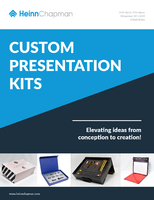IEEE Standards on environmentally preferable imaging equipment/TVs go to ballot.
Share:
Press Release Summary:
Two IEEE standards on setting criteria for environmentally preferable electronic equipment will soon be balloted. Although standards apply only to imaging equipment and televisions, their impact on electronics industry will be much broader. Both contain criteria to remove all halogens, and expand RoHS and REACH requirements through elimination of exemptions and removal of SVHCs from products. To be certified under EPEAT at basic level, products must meet all 115 required criteria in standards.
Original Press Release:
Troubling IEEE Standards on Environmentally Preferable Imaging Equipment and TVs Go to Ballot in One Month
WHAT
Two IEEE standards on setting criteria for environmentally preferable electronic equipment will soon be balloted. Although technically voluntary, these standards, under the Environmentally Preferable Electronics Assessment Tool (EPEAT) umbrella of standards, become de facto regulations due to President Obama's Executive Order 13514 Federal Leadership in Environmental, Energy, and Economic Performance that requires all government procurement to be certified to EPEAT.
Although these standards apply only to imaging equipment (1680.2) and televisions (1680.3), their impact on the electronics industry will be much broader. These standards will indirectly impact all electrical and electronic equipment by setting virtual standards for "environmental" electronics throughout the supply chain as well as establishing precedent for future IEEE EPEAT standards.
Despite their widespread impact, these standards have been developed by a small sector of the electronics industry. Being involved in the balloting process will give individuals the opportunity to ensure that the IEEE EPEAT standards maintain IEEE's tradition of technically and scientifically based standards.
FACTS
o Both standards expand upon the current RoHS Directive and REACH Regulation requirements through the elimination of exemptions and removal of SVHCs from products.
o Both standards contain criteria to remove all halogens, including Tetrabromobisphenol-A (TBBPA), the most common flame retardant used in printed boards.
o Both standards include a criterion for manufacturers to inventory more than 100 substances in their products.
o Neither standard requires any assessment of whether substances restricted under the standard will or can be replaced with substances that are better for human health and the environment.
o There are a total of 115 criteria for both standards. In order to get certified under EPEAT at the very basic level, a product must meet ALL required criteria. Although 57 of those criteria are optional, they must be met in order for a product to achieve any level above the very basic level.
o The criteria in both standards cover all aspects of the product from the chemicals contained in them to how they are disposed.
WHEN
The deadline for joining the balloting group, in order to vote on these standards is 11:59 pm ET on June 23, 2011.
WHO
In order to vote, individuals must be members of the IEEE Computer Society and an IEEE Standards Association. Simple step-by-step instructions on joining and balloting are available at www.ipc.org/EPEAT-standards.
HOW
IEEE members can vote at development.standards.ieee.org/my-site/home by using their IEEE Web account user name and password, and following the simple step-by-step instructions listed at www.ipc.org/EPEAT-standards.
Non-IEEE members should visit www.ipc.org/EPEAT-standards for simple step-by-step instructions on joining and balloting.
Industry members should not let the complex balloting process deter them from providing their vital opinions on these standards. IPC is concerned that these standards, as currently drafted, fall short of IEEE's tradition of technically and scientifically based standards and urges industry members to participate in the balloting process.
Tetrabromobisphenol-A (TBBPA), has been safely used in electronic products for decades. The World Health Organization and the European Commission Scientific Committee on Health and Environmental Risks (SCHER) conducted separate, comprehensive scientific assessments of TBBPA and both groups found TBBPA to be safe for human health and the environment.
About IPC
IPC (www.IPC.org) is a global trade association based in Bannockburn, Ill., dedicated to the competitive excellence and financial success of its 2,900 member companies which represent all facets of the electronics industry, including design, printed board manufacturing, electronics assembly and test. As a member-driven organization and leading source for industry standards, training, market research and public policy advocacy, IPC supports programs to meet the needs of an estimated $1.85 trillion global electronics industry. IPC maintains additional offices in Taos, N.M.; Arlington, Va.; Stockholm, Sweden; Moscow, Russia; Bangalore, India; and Shanghai, Shenzhen and Beijing, China.




